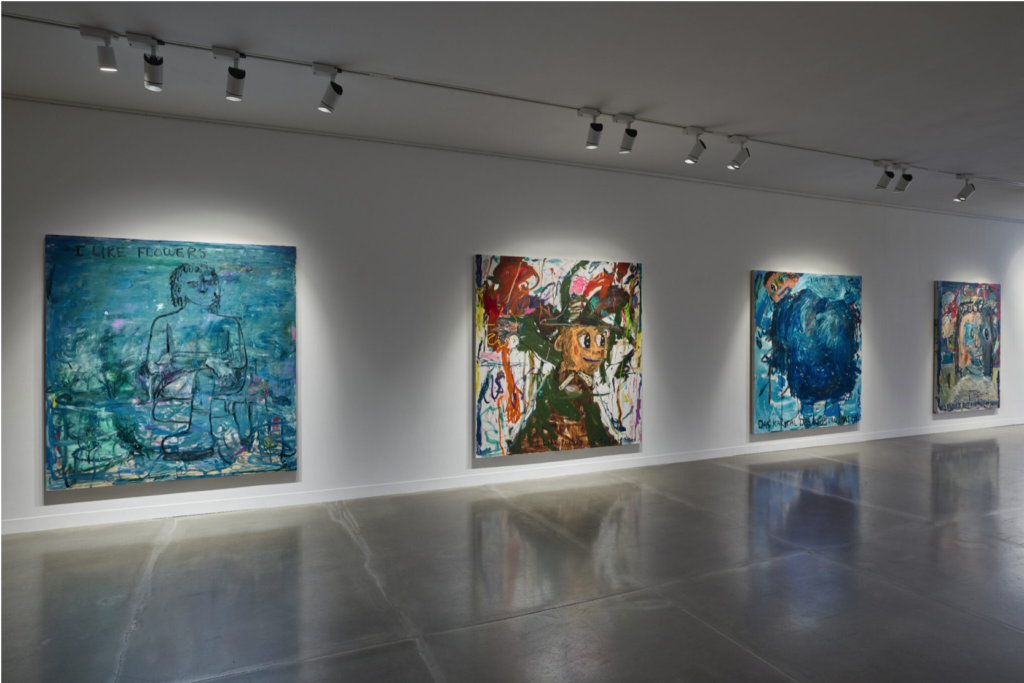Georg Óskar

Within the subdued shades of Georg’s artworks is a predominant subtext, there is a repertoire of innocence delving into a material of poetic conversations and at the same time exploring the significance of the unseen or insignificant. He describes to me “something you would see, you didn’t want to see it, but it was just there” which you sometimes wish you hadn’t seen, that you catch at the corner of your eye. His conversions of thoughts in his artworks display an innocence however, that resonates with the sketchbooks of scribbles and notes in our old school books or diaries, with the adult view of the dark reality of society. He plays with abundance, in capturing the absurdities with a sarcastic outlook, at the bizarre and profane. His irony is evident within the context of the glimpses into these dark moments that he conveys, with poetic innuendos scribbled or scratched into his paintings. His references with the obscenities of extremes, whether it’s cartoon characters, everyday anomalies and the dysfunctions of adult life, within the everyday of community, at what we present as normal, he draws attention with a critical eye, the unseen and presents it to us with palette of pastels and connotations of childlike innocence so as to let us detach ourselves with the seriousness of the subject matter. His aggressive brush strokes, broad splatters of paint and emotionally charged subject matter, reminiscent of the Neo-expressionism of Basquiat and Georg Baselitz, however with his wryly twisted insinuations.
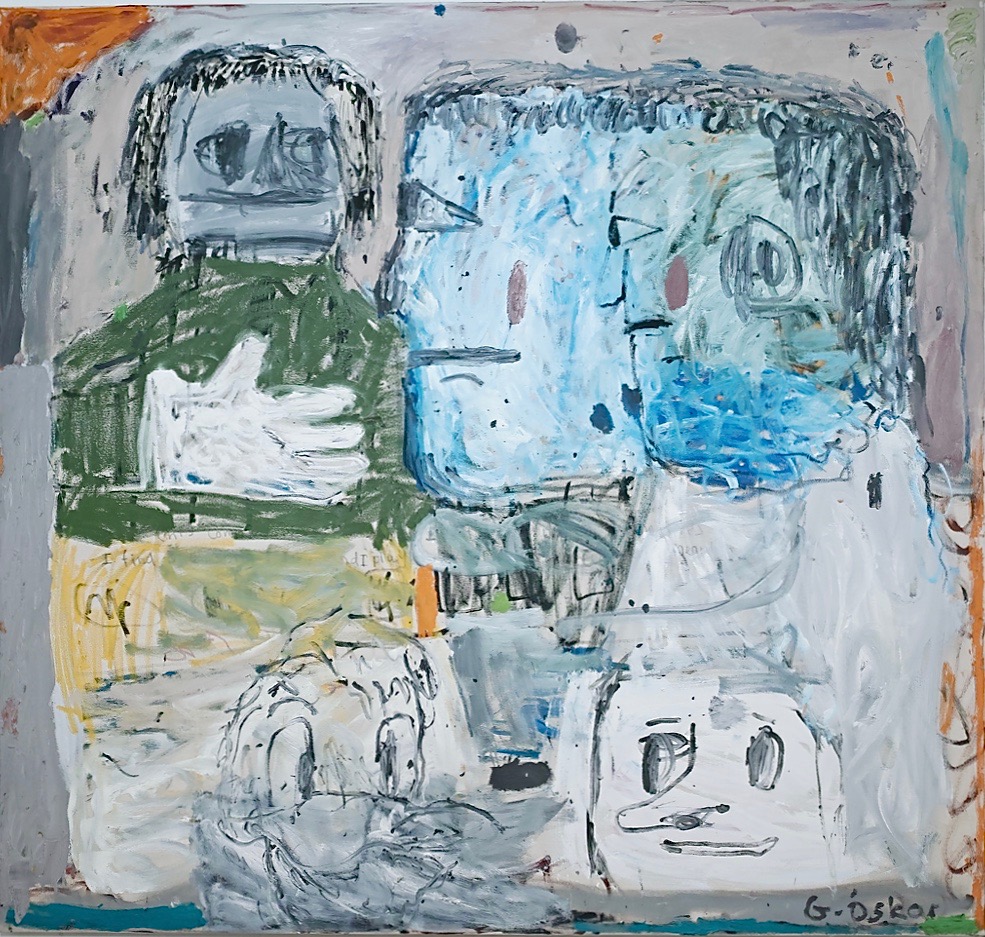

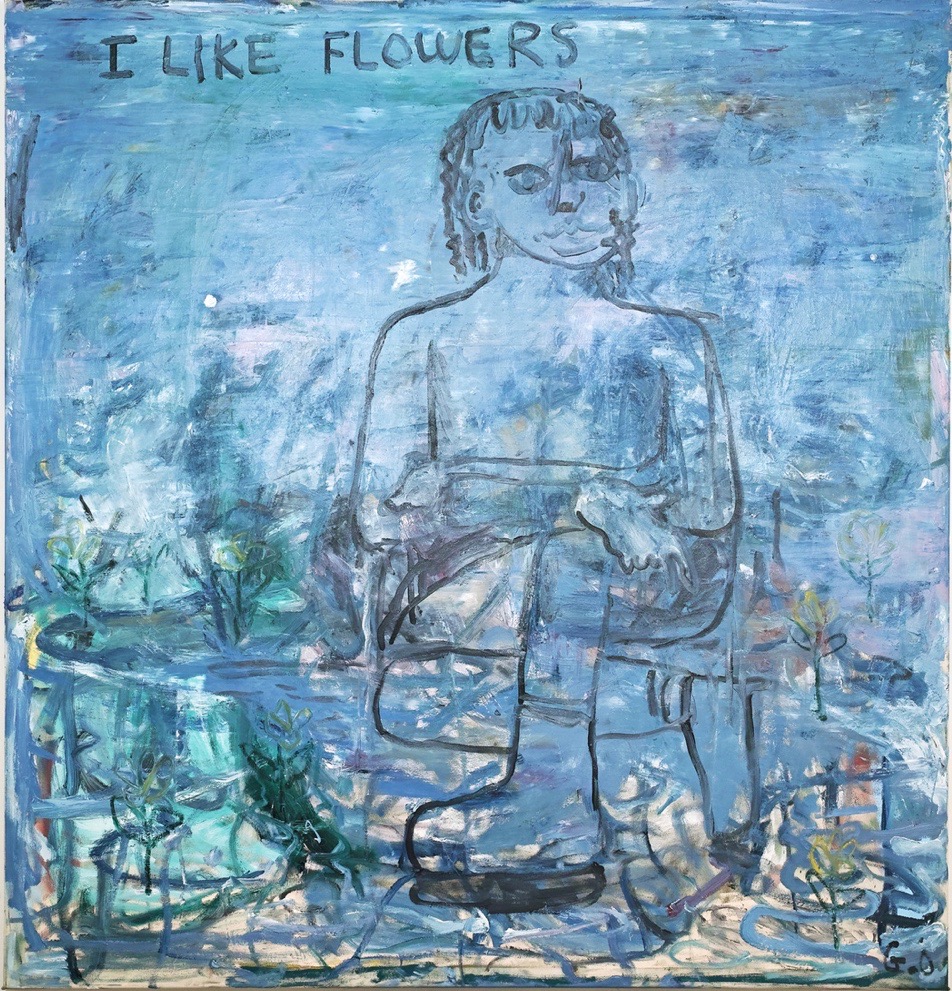
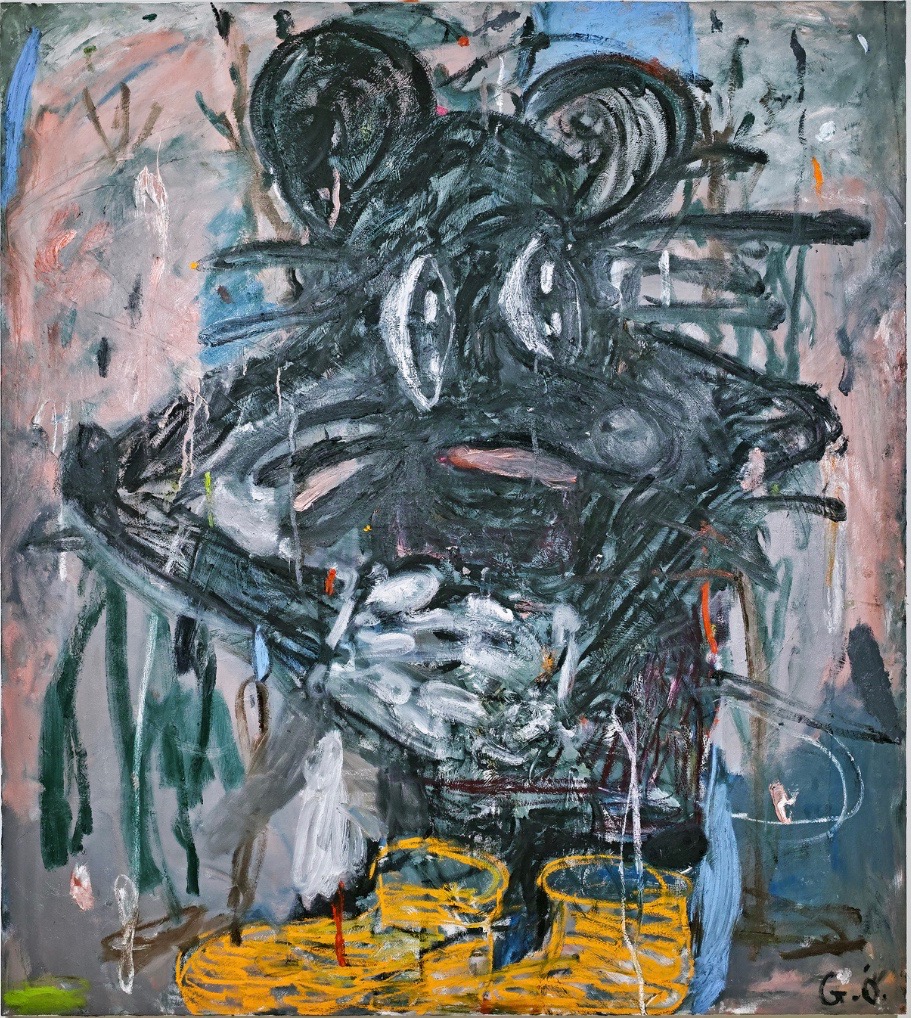
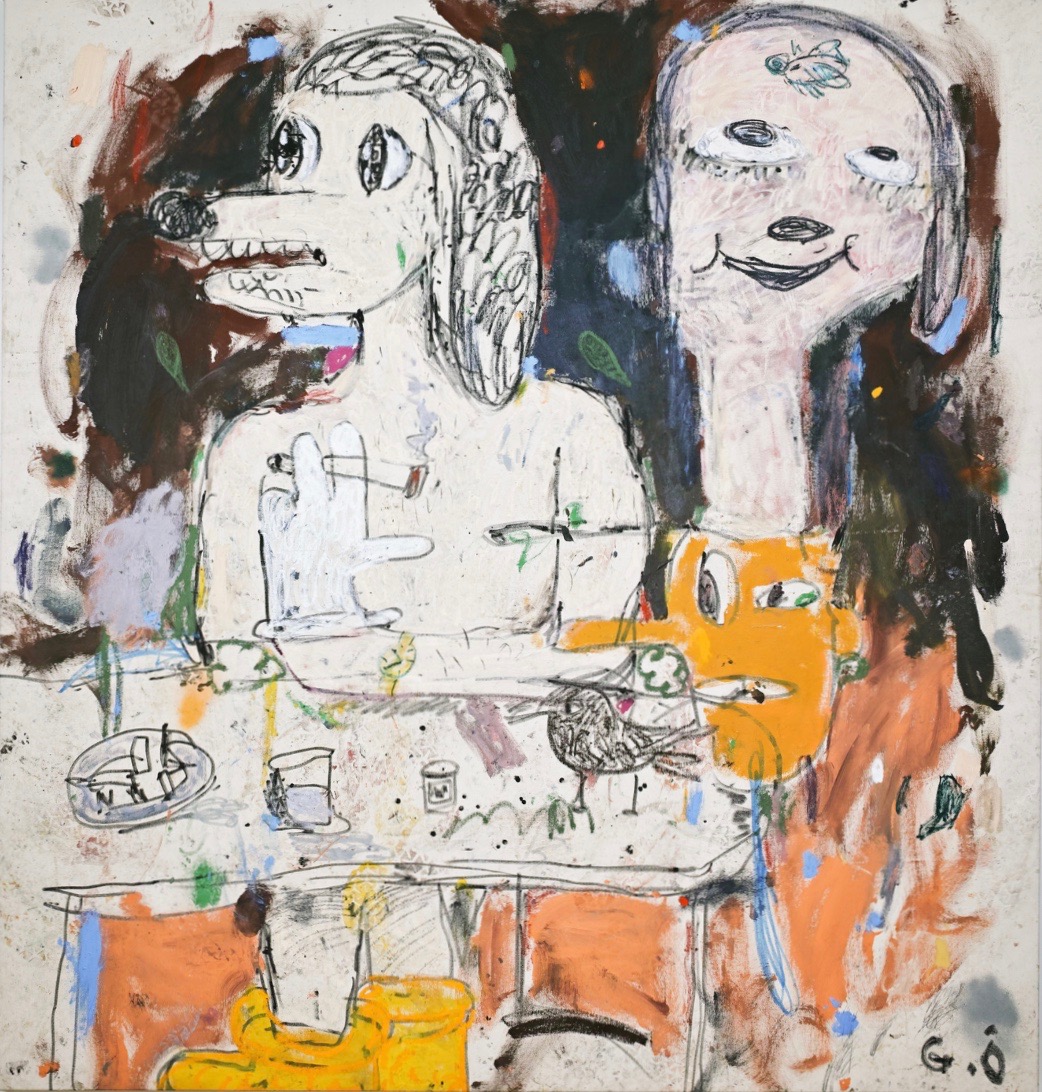
Georg is an Icelandic artist, who currently lives with his wife in Oslo, Norway; this is where they met when he studied fine art; however, he does reveal during our conversation that he spent the first five formative years of his life in Crete, and then he relocated with his mother to her homeland Iceland. It’s all in context whether his upbringing impacted his art, as he talks about painting the accumulation of the unconscious. Georg describes, how children have fantastic imaginations with little fairy tales, and how he is trying not to lose his imagination, and this childlike touch in his work, how he is holding onto that describing himself as little bit of a dreamer, and when he works, he tries not to filter it, just like a child. He describes the end of year school exhibitions in his primary years, and how much he enjoyed looking at the big wall of drawings, it was unfiltered raw and pure, and that he tries to approach his work with the same innocence. Whilst working to follow the feeling in his gut, “In the beginning it is pure energy, and to see a little bit of what is going to happen”. He tries not to be in the way of the painting, and pushes the ‘self’ away and lets the unconscious part of himself come through, “If you make plans, they don’t end up like that” he explains. It’s about following your intuition he tells me “You can either push the feelings aside or master it in some way’.
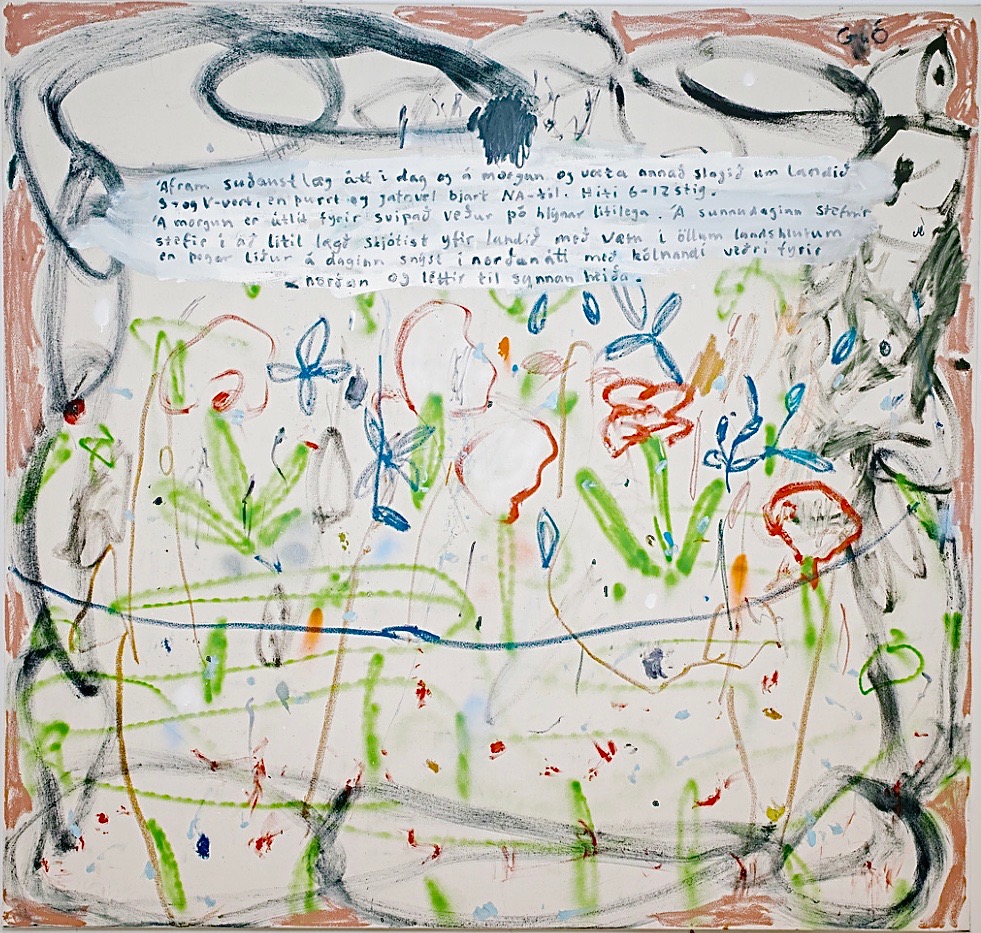
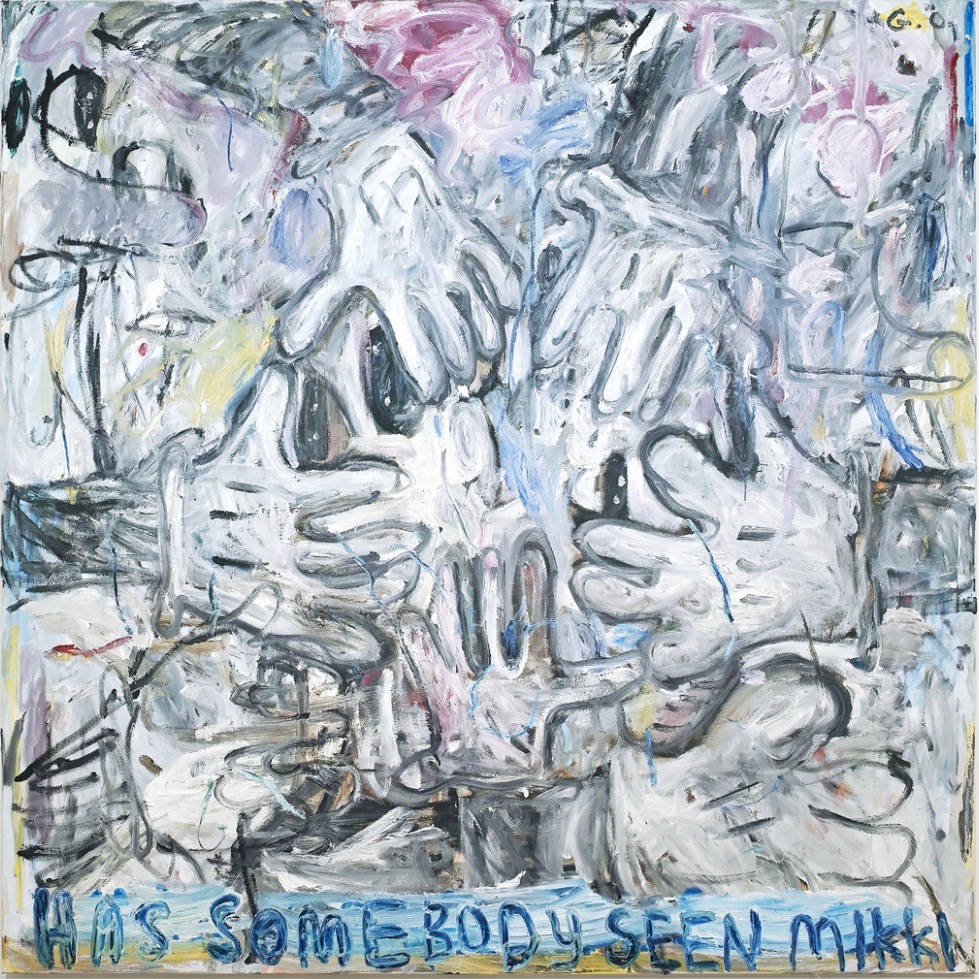

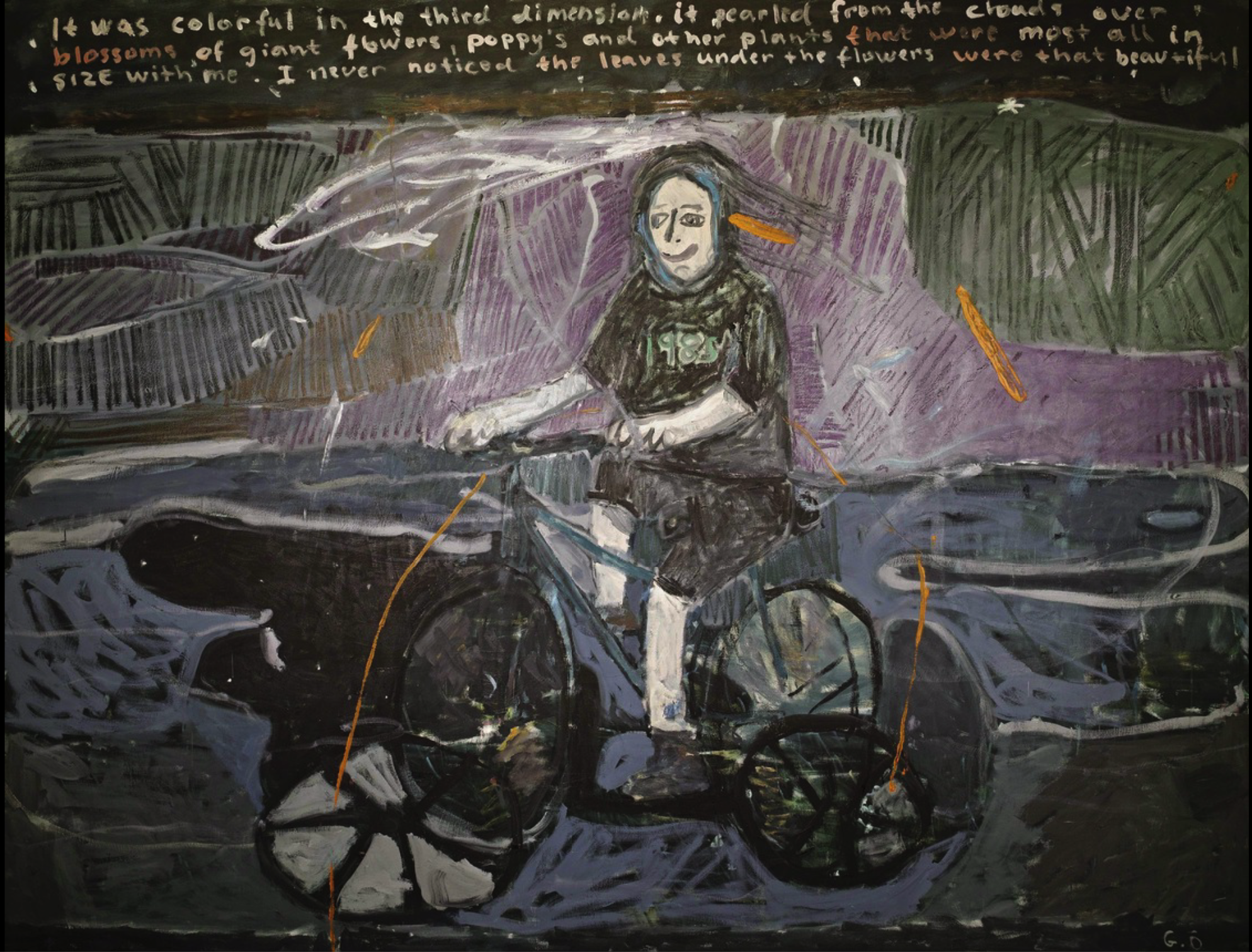

He focuses on what touches him the most, if he sees something he digs deeper, walks in the park, he doesn’t stick with what he is most comfortable with, “If you see a couple in love, you know it’s not going to last forever” it’s a little bit of an illusion, Georg explains. It’s when you see some kind of suffering on the way, and he describes seeing an old man fall, and the suffering in his eyes of helplessness, and realising we will all end up old one day, it’s these moments he sticks with. He may dress these moments up and to become more involved, he cannot only show the blandness. However, he explains how you can’t stand above it and look down, describing a unique contrast between not shocking or being too arrogant, or just being silly; calling it a bullseye when you are playing with the two contrasts. We discuss perfection, Georg regards perfection as something negative, and believes it’s a very good place to stop in a painting, describing “perfection is a word, of something that is not there”. He believes the world needs art, in this otherwise square existence, as there is not as much freedom in the world as we would like to believe; art, music, theatres, these expressions are what the world needs, he explains. However, you put yourself in a vulnerable position being an artist. He describes it as a lost chance to not to be able to express yourself, although as in every profession it’s very competitive, based upon luck and what Georg describes as the law of the superficial connections.

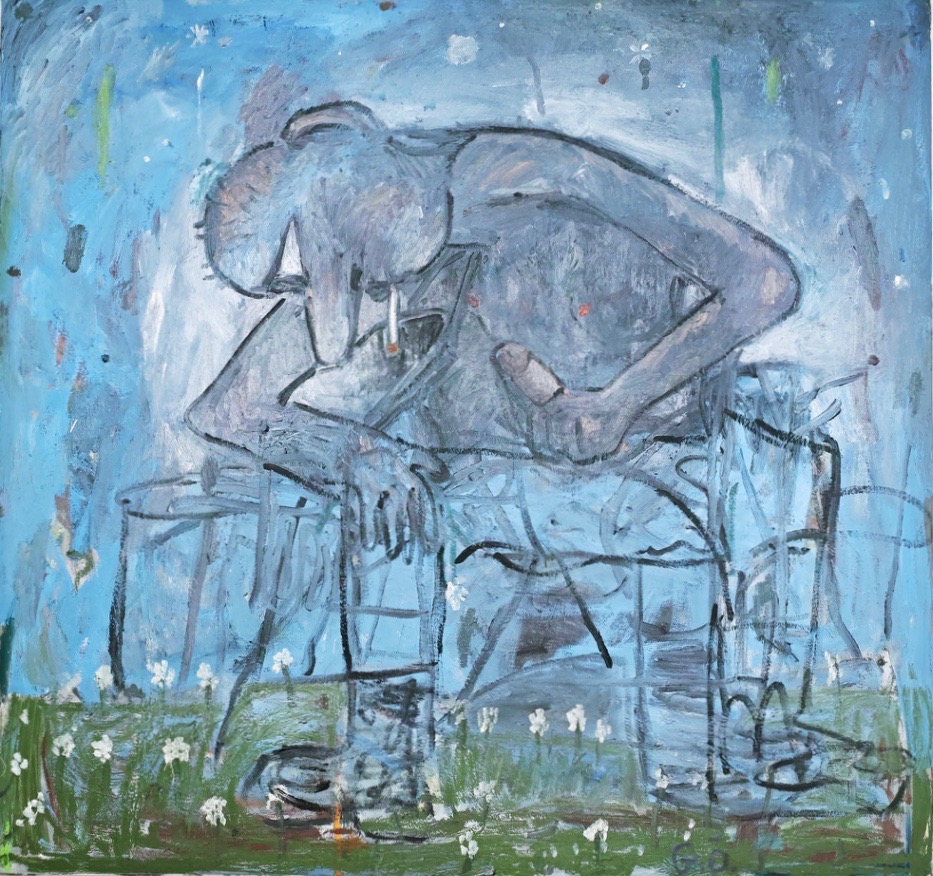
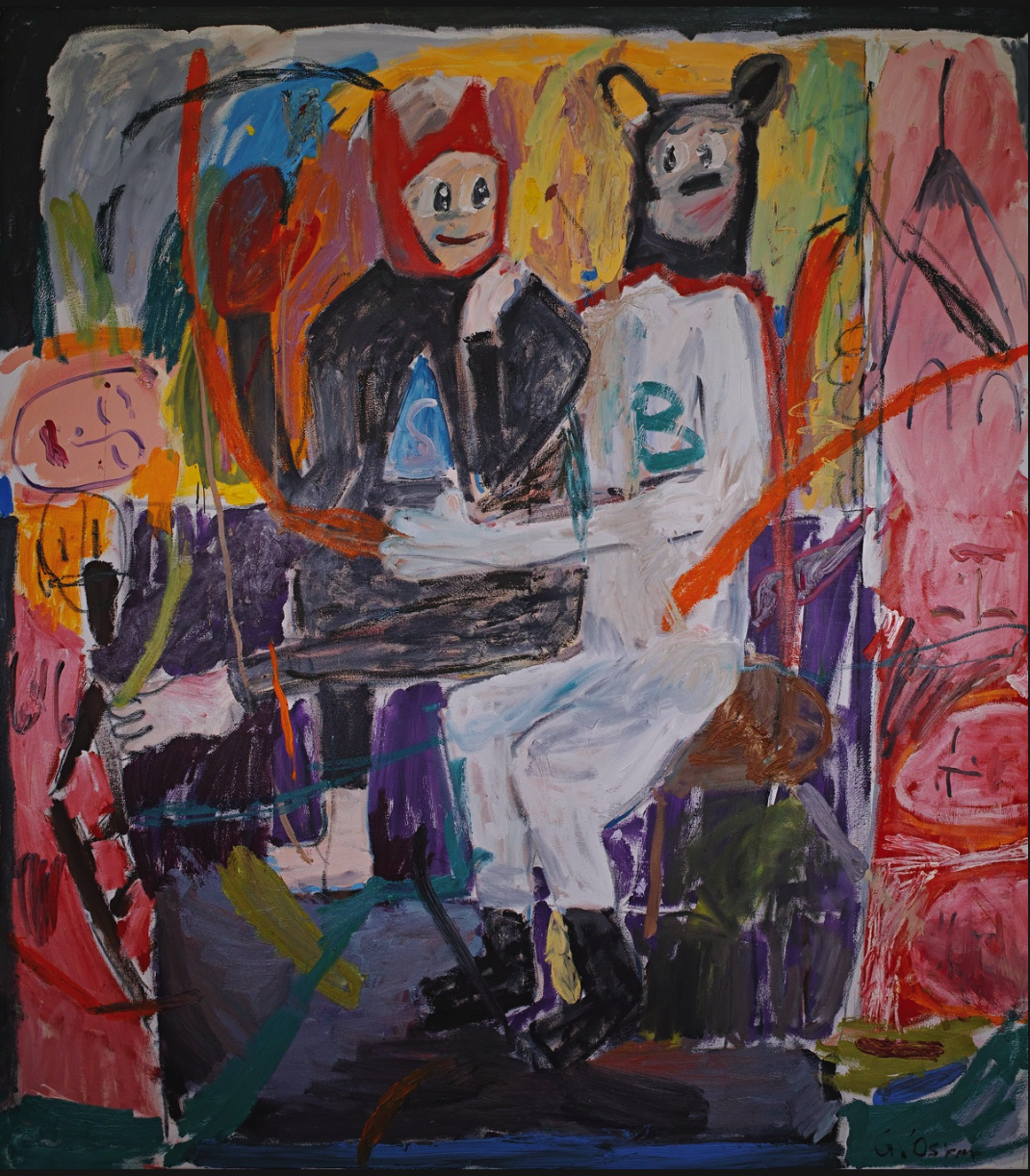

He talks about the first painting he did in his first art class around the age of 21, he had a moment when he thought I am going to go for this. Although he describes all the times that one is broke, he finds painting the perfect medium, to have a story inside and let it out, this is the way out of knowing how to express themselves. His inspirations are German painter Georg Baselitz, and Icelandic artist Jóhannes Sveinsson Kjarval, Georg describes being in his teens and looking at these artists works and thinking, “I want to do that” and then he mentions Francis Bacon “the painter’s painter” Georg explains smiling.
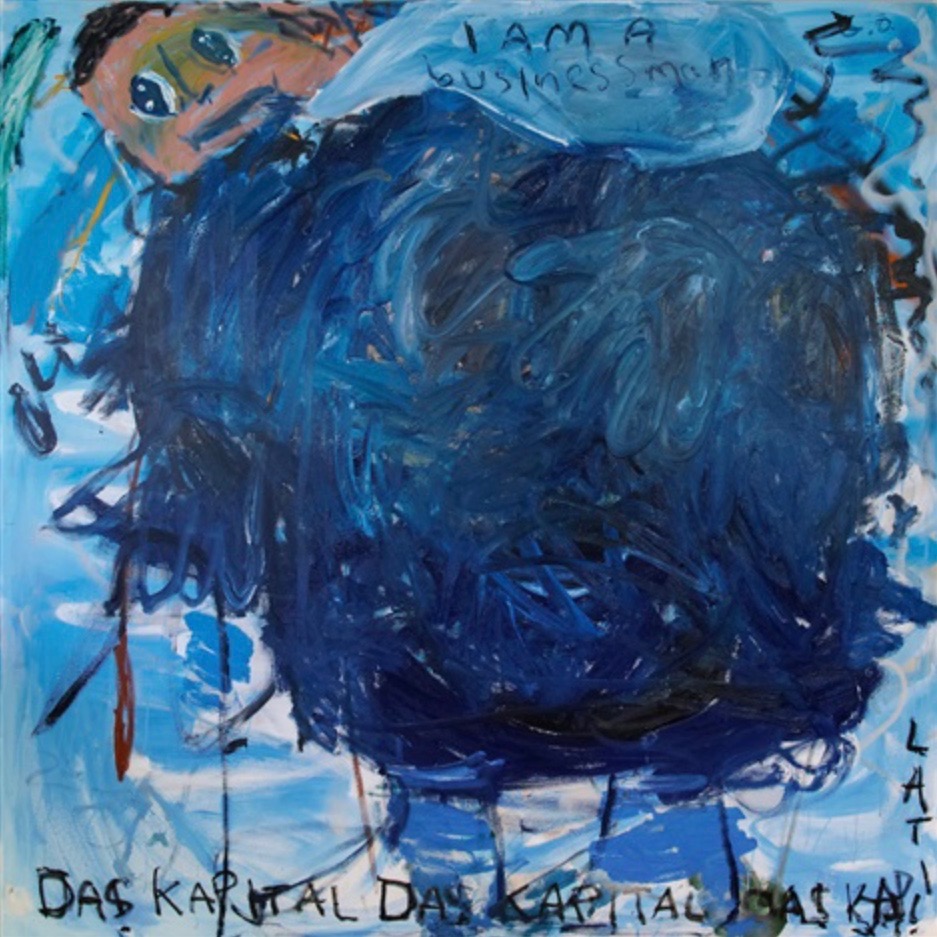

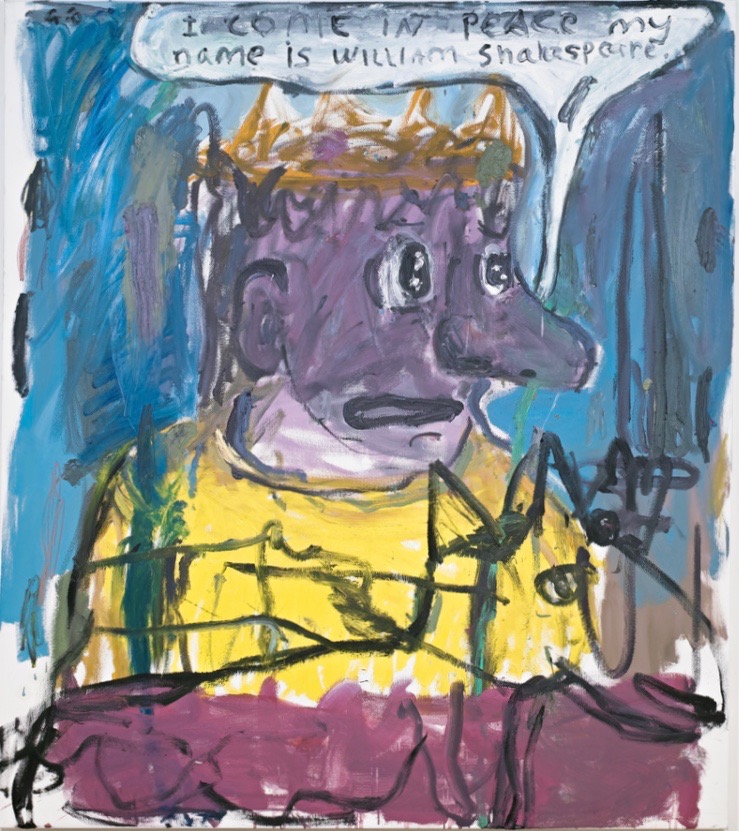
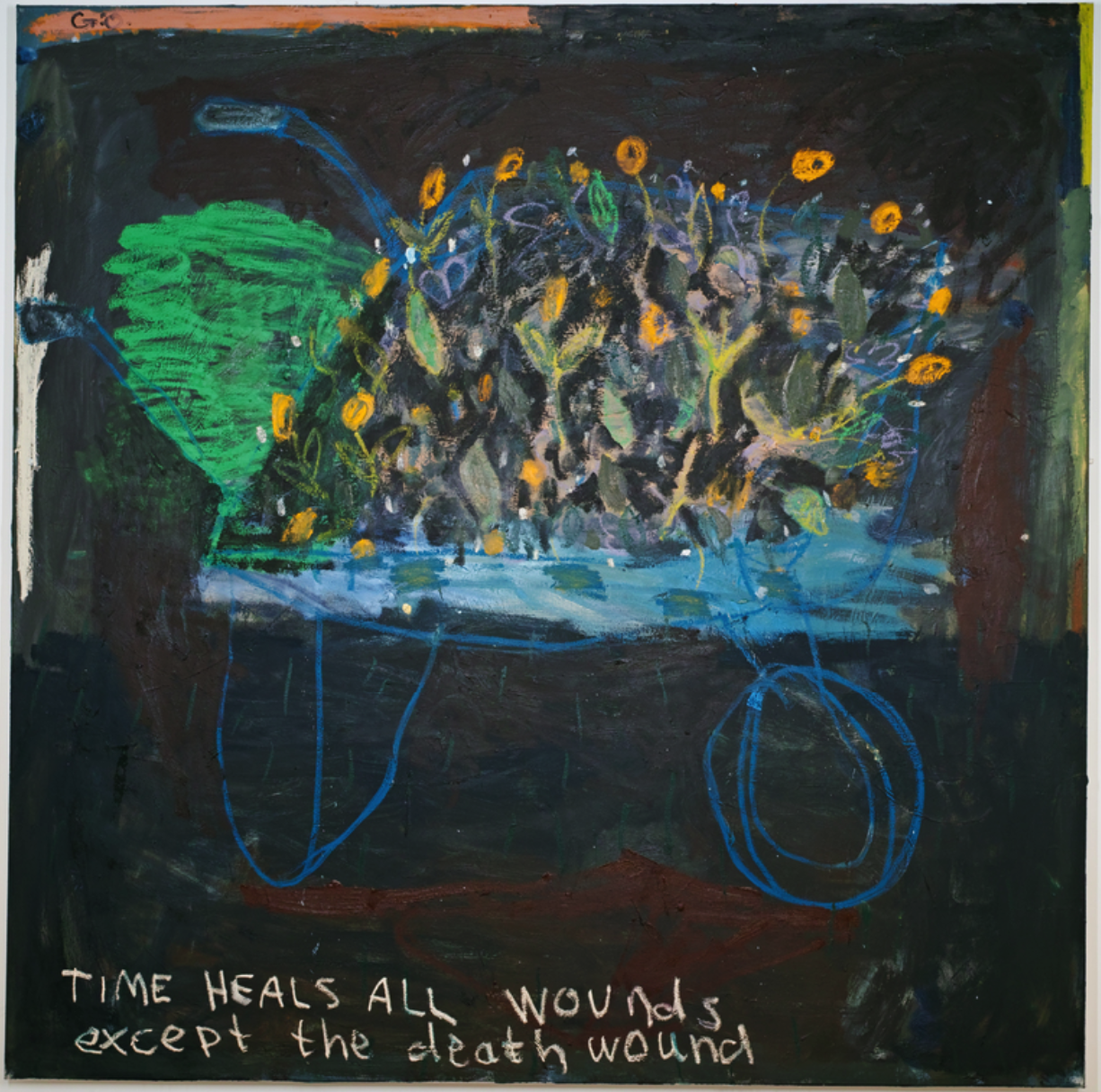
Having exhibited Internationally, we discuss the satire of his work, and how Londoners seemed to embrace his irony, he refers to his painting ‘Das Kapital’ exhibited in his solo show in Mayfair London at the JD Malat Gallery, and the appreciation of an art critic, who demonstratively engaged in the subtext of the artwork, with good humour. This contrast in the reactions to his work from various countries fascinates him. He recounts his experience and time spent living in Berlin, describing the vastness and 24-hour energy as a stark contrast to his life in Iceland. “I grew up as an artist in Berlin” he tells me, “I needed to experience the colours of the rainbow” he explains; a contrast from his childhood hometown Akureyri, the northern part of Iceland, and his home in Oslo.
Interview: Antoinette Haselhorst
